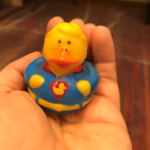By Jamye Sagan
During the 2019 STC Summit in Denver, CO, I attended several interesting presentations. Here are highlights from some of them.
Expanding Your Toolbox to Make Yourself a More Productive Editor
Kelly Schrank (@headbookworm)
In her presentation, Schrank shared several time-saving tips for editing documents in Microsoft Word. These tips included links to various Microsoft Word add-ins such as PerfectIt (www.intelligentediting.com) and Grammarly (www.grammarly.com), keyboard shortcuts and how to customize the Quick Access Toolbar. I even learned strategies for using wildcards in using Find and Replace!
Although I did not attend her entire presentation because I had to prepare for my own right afterwards, I still gained a wealth of information. In fact, her session, with potential opportunities for hands-on practice, would make a great workshop for any SIG or chapter.
Speed Editing: Doing the Most Good with the Least Time and Support
Linda Oestreich (@LindaLouO)
As technical communicators, we always want to do all the things. However, time constraints often prevent us from doing so. In her presentation, Oestreich used the analogy of a horse race to explain her process for speed editing. For example:
- Preparing for the race: Oestreich recommends using editing checklists – in fact, she recommends the lists used and created by Kelly Schrank. Oestreich sums up her preparation as “Do the must haves before the nice to haves.”
- Skimming the track: Oestreich recommends analyzing the document for its editorial needs, including length and complexity, how it’s organized and audience/purpose.
- Running the race: Oestreich compares the race itself to the actual edit process, which involves maintaining priorities, using checklists and embracing quality control.
Through her vivid use of analogy, Oestreich helped me envision the overall editing process and how I can focus on the essentials.
Teaching Online: Tips, Tricks and Techniques for Engaging Virtual Learners
Kevin Siegel (@Kevin_Siegel)
In his presentation, Siegel shared various tips and tricks for teaching online. The tips that resonated with me included:
- Investing in premium internet when presenting in a hotel, because the basic internet service may not be robust enough.
- Creating an interactive PDF that helps users orient themselves through the virtual classroom.
- Getting all users on board by presenting the agenda on screen and having everyone sign off on the agenda via chat.
- Using iconography to emphasize information and make it come alive.
- Engaging users by allowing them to lead the presentation at times.
Siegel clearly practiced what he preached. He thoroughly engaged the audience by having them log into a virtual class at the beginning of the session and asking them to participate at given times during the presentation. Although I was ultimately unable to log into the virtual class due to phone issues, I was still able to see the class interface and see how everyone else engaged with the presentation.
The Human Touch: Bringing Instructor Presence into eLearning Environments
Julia Cho (@teachwrite)
Of all the sessions I attended at Summit, this one was one of my favorites. In her presentation, Cho discussed the importance of adding a personal touch to eLearning, which oftentimes seems impersonal. Cho began by explaining why this personal touch is needed – primarily to reduce feeling of isolation, which can lead to anxiety. She also discussed the educational experience, which combines instructor presence, cognitive presence and social presence. Most of the presentation focused on how to create this educational experience. Cho gave the following advice.
- Design should be first and foremost when establishing the educational experience. In fact, the entire course should be designed before the course begins.
- Designers should have links to the same thing in different places, because students get anxious if they cannot find resources or information quickly.
- Use video to establish a personal touch. Use a short – less than 2 minute – video to introduce yourself as the instructor.
- Use a combination of video and text when giving feedback to struggling students, which can personalize the feedback.
- Insist on AV support if facilitating a synchronous session, so you can remain focused on the educational content.
#PowerOfStory: The Cultural Program That Got Me Clicks
Viqui Dill (@viqui_dill)
In her presentation, Dill explained how she leveraged her company’s #PowerOfStory program to help her fellow employees overcome fear of change during their migration to Office 365. In this program, employees had the opportunity to gather in groups and share their personal stories, whether through oral presentation, scrapbook page blog entry. Stories were later shared through various internal communication channels.
Dill clearly knows how to engage her audience with meaningful activity – during her icebreaker, she presented various images of well-known storytellers — from Jesus Christ to U.S Representative Alexandria Ocasio-Cortez — inviting audience members to identify them and then giving out prizes to the winners. Check out my adorable superhero duck!
 My main takeaway from Dill’s presentation was how we can include stories in technical communication. Examples include using scenarios in eLearning, incorporating photos and videos, seeking testimonials and inviting comments on our uploaded deliverables.
My main takeaway from Dill’s presentation was how we can include stories in technical communication. Examples include using scenarios in eLearning, incorporating photos and videos, seeking testimonials and inviting comments on our uploaded deliverables.
Overall, I had never thought of the human element of getting people on board with using a program; I had always just considered the technical aspect of teaching people — how to do X in Y program. But after having gone through a similar project at work where we migrated to a whole new communications system, I appreciated all the venues through which we could share questions and concerns – and learn in the process.

Jamye Sagan currently serves as treasurer for the IDL SIG, and is a senior member of STC. She served as a co-manager of the SIG from 2010-12.
At work, she uses her tech comm skills to make sense out of the seemingly senseless. At play, she uses sticks and hooks to transform yarn into pretty objects.
